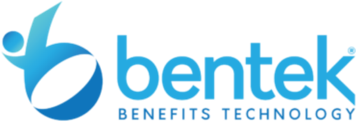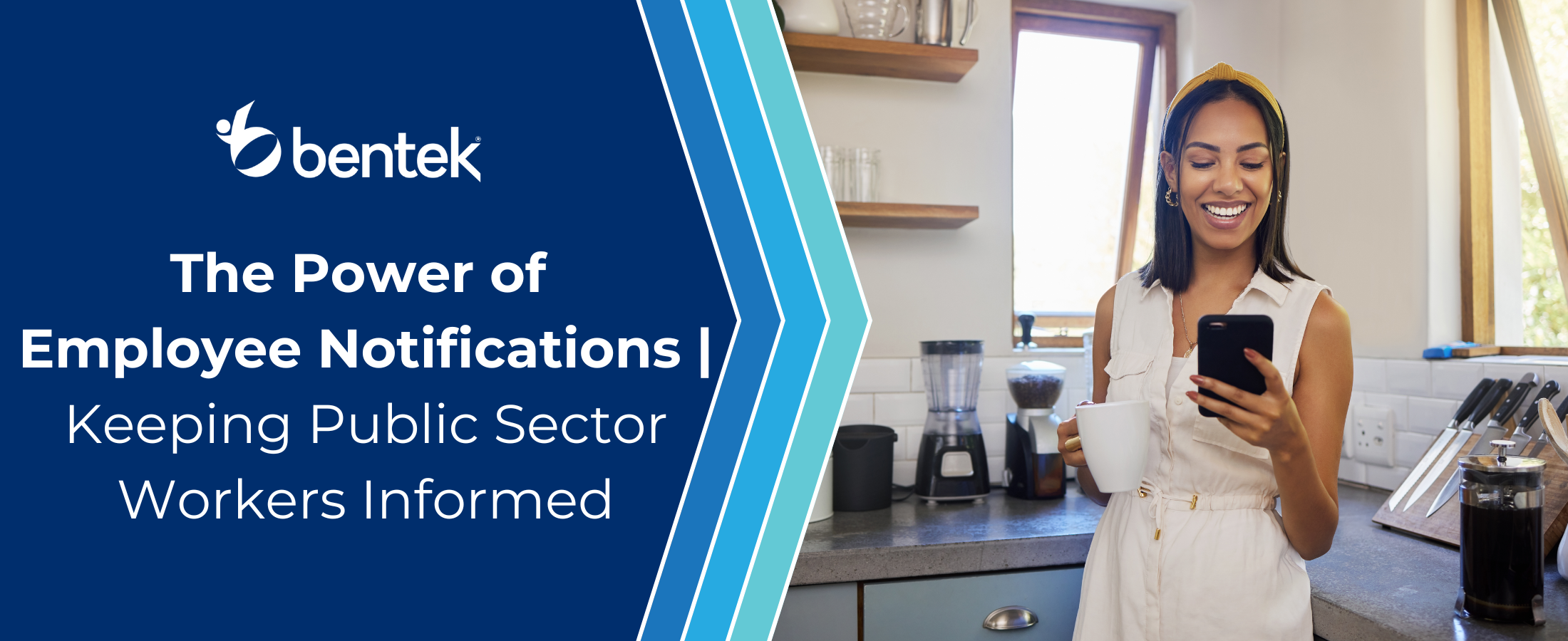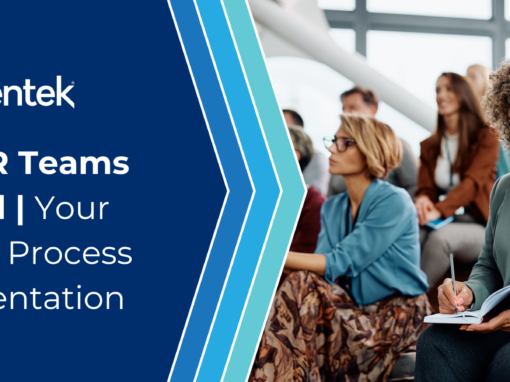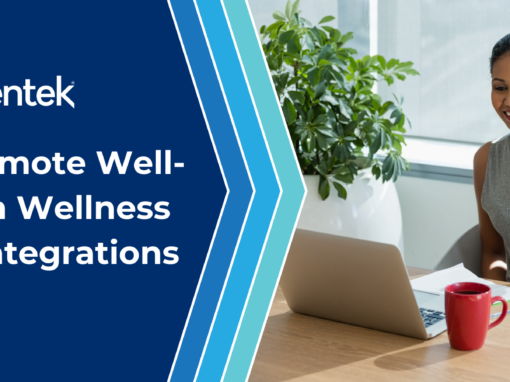Effective communication is crucial for a thriving public sector organization. According to Gallup, poor communication from supervisors is a root cause of employee burnout and disengagement in the federal government. Employee notifications can bridge this gap by keeping everyone informed about important updates like policy changes, benefits, and emergency alerts.
In state and local governments, where information is vital, employee notifications play a key role. They keep employees informed and engaged while ensuring compliance with regulations. By distributing updates on benefits, policies, and emergencies, these notifications create an efficient flow of information.
In this article, we will provide practical advice on using notifications to enhance communication, compliance, and engagement. Whether you’re improving an existing system or starting anew, you’ll find valuable insights here.
The Role of Notifications in Operational Efficiency
- Timely Updates: Ensuring that employees receive immediate information about policy modifications and compliance demands is not just a matter of convenience; it’s a critical component of operational fluidity. A delay in disseminating such updates can lead to bottlenecks, misinformed decisions, and inefficiencies that ripple across departments.
- Streamlined Processes: Automated notifications, specifically, play a vital role in streamlining HR processes. For instance, reminders about benefits enrollment deadlines or policy acknowledgments reduce the administrative burden and ensure higher rates of compliance and participation.
- Risk Mitigation: In the realm of public sector HR, the stakes of miscommunication are high. Notifications serve as a safeguard against the risks associated with non-compliance or policy breaches, protecting organizations from potential legal and financial repercussions.
Boosting Employee Engagement Through Notifications
- Informed Workforce: Knowledge is power. When employees are kept in the loop about organizational developments, they feel valued and respected. This transparency fosters a culture of trust and inclusivity, where employees are more likely to feel a part of something greater than their job descriptions.
- Feedback Mechanisms: Beyond merely informing, notifications can serve as a two-way street, inviting feedback and engaging employees in dialogue. This engagement is crucial for not only gauging the workforce’s pulse but also for crowd-sourcing solutions to organizational challenges.
- Recognition and Rewards: Highlighting achievements and milestones through notifications can significantly boost morale. Public sector organizations can leverage notifications to celebrate individual or team successes, thereby reinforcing a culture of recognition and appreciation.
Legal Compliance and Notifications
- Mandatory Disclosures: Laws like the Uniformed Services Employment and Reemployment Rights Act (USERRA) and the National Labor Relations Act (NLRA) mandate that employers, including state and local governments, inform their employees about their rights and obligations. Failure to comply with these requirements can result in severe penalties, underlining the importance of an effective notification system.
- Updated Regulations: The legal landscape is ever-evolving, with new regulations and amendments frequently coming into play. Notifications ensure that organizations remain on the right side of the law by promptly informing employees about changes that affect their employment rights and benefits.
- Preventive Action: Beyond compliance, notifications act as a preventive measure against potential disputes. By keeping employees informed about their rights, governments can mitigate the risk of grievances and litigations, which can tarnish an organization’s reputation and deplete its resources.
In essence, the strategic implementation of employee notifications in state and local government sectors stands as a linchpin for operational efficiency, employee engagement, and legal compliance. It bridges the gap between management and workforce, fosters a culture of transparency and inclusivity, and ensures that organizations navigate the complex legal terrain with confidence.
Common Types of Notifications Needed in the Public Sector
In the public sector, where the flow of information is as critical as the services provided, notifications serve as the lifeline that ensures continuity, compliance, and care for employees. This section delves into the various types of notifications vital for public sector employees, highlighting their importance and impact on the workforce and the organization at large.
Benefits Enrollment Deadlines
According to MetLife, 83% of employees say that benefits communication needs to be clearer and more engaging for them to make informed decisions. Well-structured notifications can help keep employees informed and avoid missing important deadlines.
- Timely Alerts: The start and end of benefits enrollment periods are critical times requiring clear communication. Notifications about these deadlines ensure employees have ample time to review their options, make informed decisions, and take necessary actions without haste.
- Impact on Well-being: Missed deadlines can lead to a year without crucial health coverage or financial benefits, affecting the employee’s well-being and job satisfaction. Regular reminders can mitigate these risks, fostering a supportive work environment.
Compliance and Policy Updates
- HIPAA and ACA Changes: Laws affecting employee health benefits and rights, such as the Health Insurance Portability and Accountability Act (HIPAA) and the Affordable Care Act (ACA), undergo frequent updates. Notifications about these changes are indispensable for maintaining compliance and ensuring that employees understand their rights and obligations.
- Educational Content: In a report from MetLife, they stated that Millennials and Gen Z employees are significantly more likely to feel benefits communications are irrelevant to them, leading to struggles in understanding benefits. Including brief explanations or resources for further reading in these notifications can enhance understanding and compliance across the organization, reducing the risk of violations and penalties.
Payroll and Compensation Alerts
- Changes in Pay Structure: Notifications about adjustments in pay, whether due to promotions, policy changes, or annual raises, are crucial for transparency. They allow employees to plan their finances better and foster trust in the organization.
- Deduction Updates: Information about changes in deductions, contributions to retirement plans, or tax withholdings directly impacts take-home pay and requires timely communication. Such transparency ensures employees feel respected and valued.
Emergency Alerts
- Urgent Information Delivery: In the face of natural disasters, health crises, or security threats, a robust system for emergency notifications can mean the difference between safety and peril for employees. These alerts must be swift, clear, and actionable.
- System Reliability: The effectiveness of emergency notifications relies on the reliability and reach of the chosen communication channels. Testing these systems regularly ensures that when the need arises, information flows unimpeded to those who need it most.
In the vast ecosystem of public sector employment, where the stakes of communication are perpetually high, notifications stand out as a critical tool. They bridge the gap between administration and employees, ensuring that every member of the workforce remains informed, engaged, and prepared for the challenges and changes that lie ahead. Through a combination of technology, strategy, and empathy, public sector organizations can harness the power of notifications to foster a culture of transparency, compliance, and mutual respect.
Best Practices for Effective Employee Notifications
In the realm of public sector employment, the dissemination of information is not just a matter of convenience but of necessity. Ensuring that employees are timely, accurately, and effectively informed requires a strategic approach to notification systems. Best practices in this area not only facilitate smoother operations but also enhance employee engagement and satisfaction.
Utilization of Multiple Communication Channels
- Broad Reach and Accessibility: The key to effective employee notifications lies in utilizing a variety of communication channels. Email, SMS, intranet alerts, and even mobile app notifications ensure that messages reach employees through their preferred mediums, increasing the likelihood of timely reception and action.
- Diverse Communication Needs: Different situations call for different communication methods. While email may suffice for policy updates, SMS and mobile alerts provide immediate attention for emergency situations or critical deadlines.
Importance of Timing and Consistency
- Scheduled Dispatch: Timing is everything. Notifications should be scheduled to maximize visibility and action. For instance, sending benefits enrollment reminders a week before the deadline, followed by a final alert the day before, can significantly improve participation rates.
- Consistent Messaging: Consistency in the messaging format and language across all channels reinforces the information’s importance and reduces confusion. This consistency also aids in building trust in the communication system as a reliable source of information.
Personalization of Notifications
- Role-Specific Information: Tailoring notifications based on employee roles, locations, or departments ensures relevance. A customized approach means that employees only receive notifications pertinent to their duties or benefits, thereby increasing engagement and reducing information overload.
- Data-Driven Engagement: Evidence supports the effectiveness of personalized communication. For example, departments that have implemented role-specific training notifications have seen measurable increases in participation and completion rates, underscoring the value of targeted messaging.
Self-Service Options
- Empowering Employees: Allowing employees to select their preferred communication channels and adjust notification settings empowers them to customize their information flow. This autonomy not only enhances satisfaction but also ensures that notifications are more likely to be welcomed and heeded.
- Fostering Autonomy: A self-service portal where employees can manage their notification preferences respect individual differences and promote a more engaged workforce. By offering choices, employees feel valued and respected, leading to increased morale and a sense of belonging within the organization.
Implementing these best practices for employee notifications in the public sector is not merely about improving operational efficiency; it’s about respecting and valuing the workforce. Effective communication strategies recognize the diverse needs and preferences of employees, treating them not as recipients of one-way messages but as active participants in a dynamic and responsive information ecosystem. Through thoughtful planning, execution, and continuous improvement of notification systems, state and local governments can ensure that their employees are not only well-informed but also fully engaged and satisfied with their workplace communication.
How Technology Enhances Notification Systems in the Public Sector
The public sector’s communication landscape is undergoing a transformative shift, thanks to the integration of technology in employee notification systems. This shift is not just about adopting new tools but about reimagining how information flows within government entities to reduce errors, protect sensitive data, and engage the workforce more effectively.
Automated Alerts and Digital Platforms
- Streamlining Information Dissemination: Automated alerts and digital platforms have revolutionized the way notifications are sent and received. By automating routine communications, public sector organizations can ensure timely dissemination of information, reducing the reliance on manual processes prone to delay or error.
- Reducing Human Error: Automation significantly minimizes the risk of human error. Scheduled alerts for benefits enrollment deadlines, policy changes, and compliance requirements ensure no critical information is missed or delayed.
Secure, Compliant Communication Tools
- Protecting Sensitive Information: With the rise of cyber threats, the importance of secure communication tools has never been more critical. Public sector entities are adopting encrypted messaging platforms and secure email systems to safeguard employee data during transmission.
- Ensuring Compliance: Compliant communication tools are designed to meet the stringent requirements of state and federal regulations. They provide an audit trail for every message sent, ensuring that organizations can demonstrate compliance with laws such as HIPAA and the Freedom of Information Act.
Digital Solutions and Employee Engagement
- Engagement Through Personalization: Modern digital solutions offer unprecedented opportunities for personalizing notifications. Employees can receive tailored messages based on their roles, preferences, and behaviors, increasing the relevance and impact of each communication.
- Enhancing Compliance Adherence: Personalized notifications have also proven effective in improving compliance rates. For instance, targeted reminders about mandatory training have led to higher completion rates, as employees receive messages that resonate with their specific duties and responsibilities.
The integration of technology into notification systems presents a compelling case for its adoption across the public sector. The benefits of automated alerts, secure and compliant communication tools, and personalized digital solutions are clear and impactful. These technological advancements not only enhance the efficiency and security of communication but also significantly improve employee engagement and compliance adherence.
State and local governments stand to gain immensely from embracing these digital tools. By doing so, they can ensure that their communication strategies are not only effective and efficient but also aligned with the expectations of a modern, technology-savvy workforce. The future of public sector communication lies in leveraging technology to build more informed, engaged, and secure government workplaces.
For more articles like this, check out the Bentek Blog!




